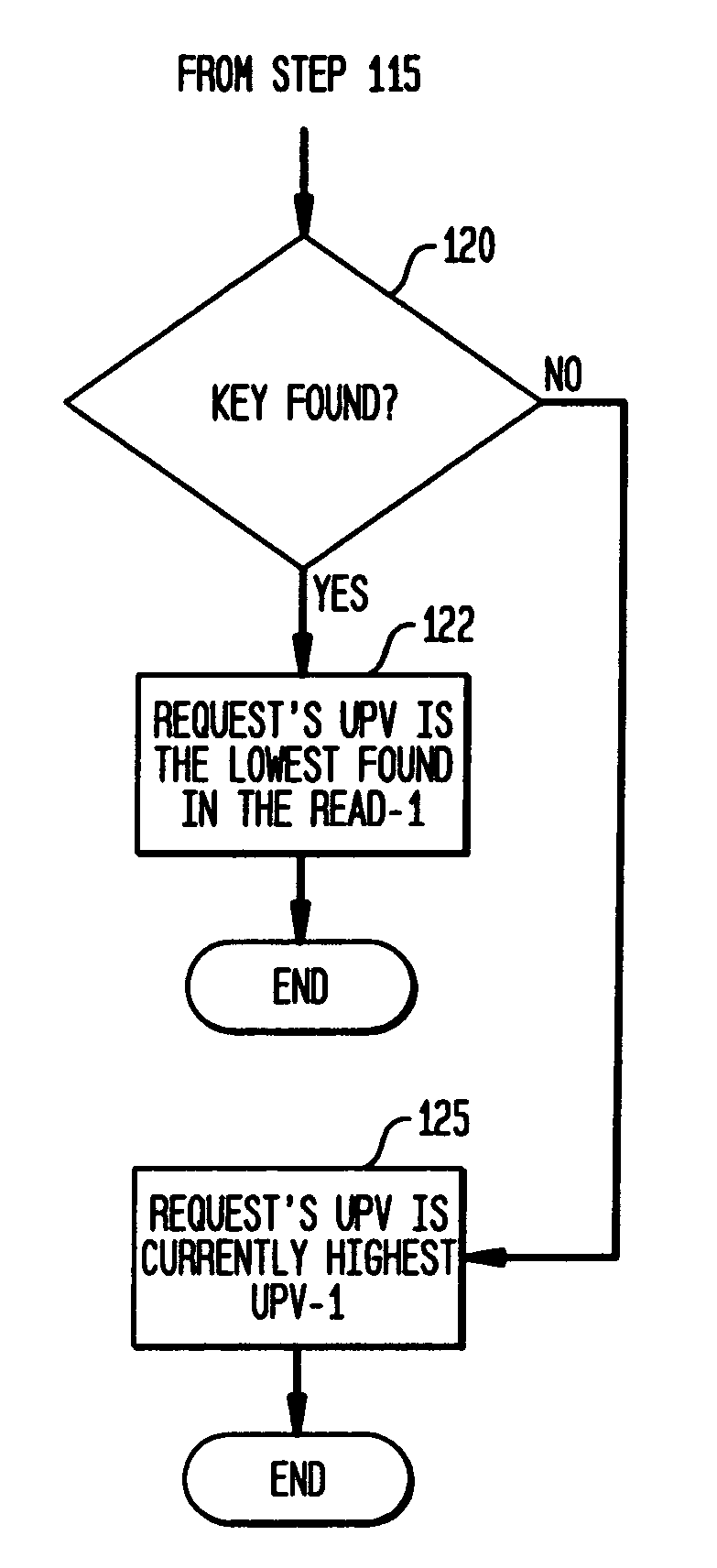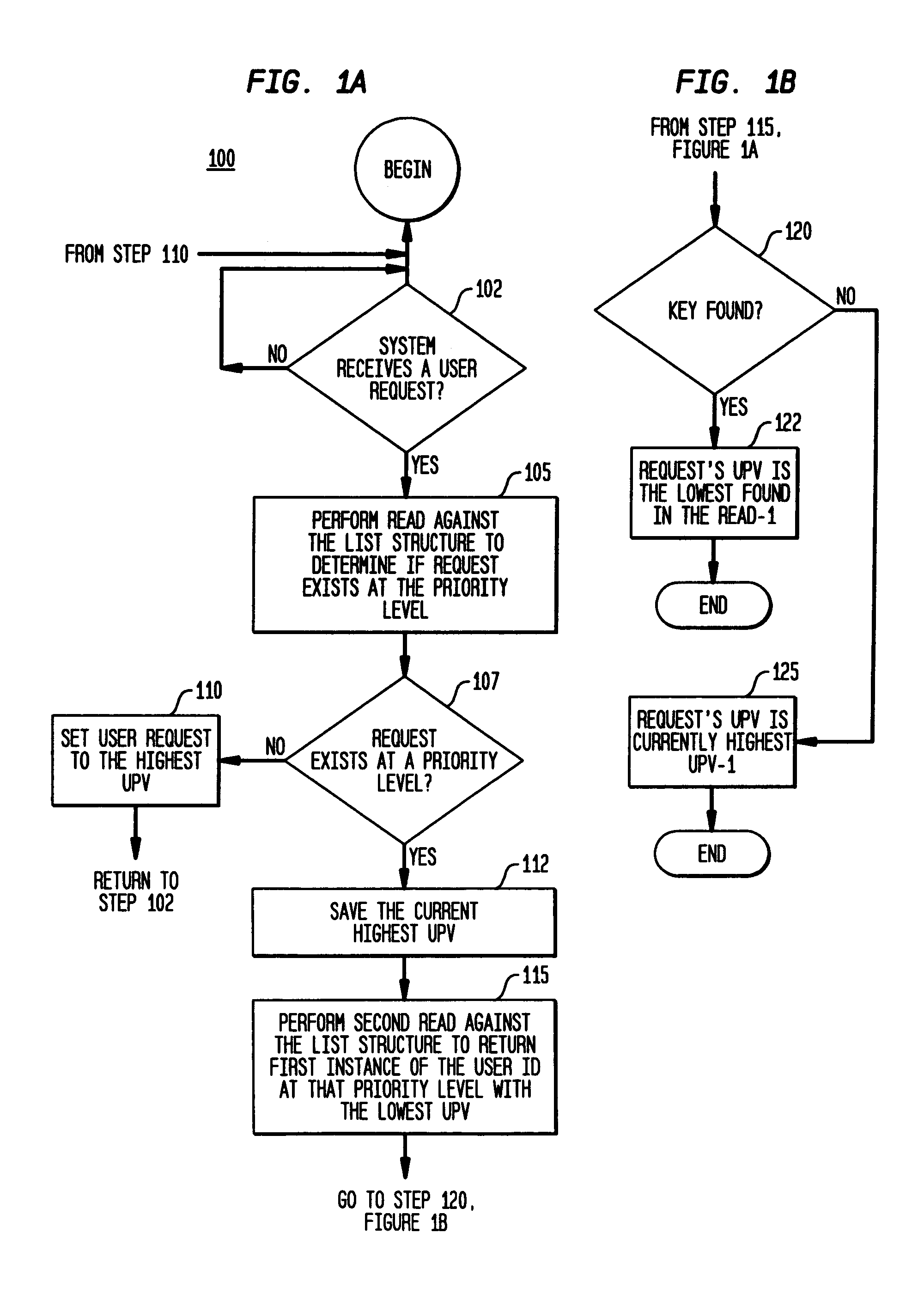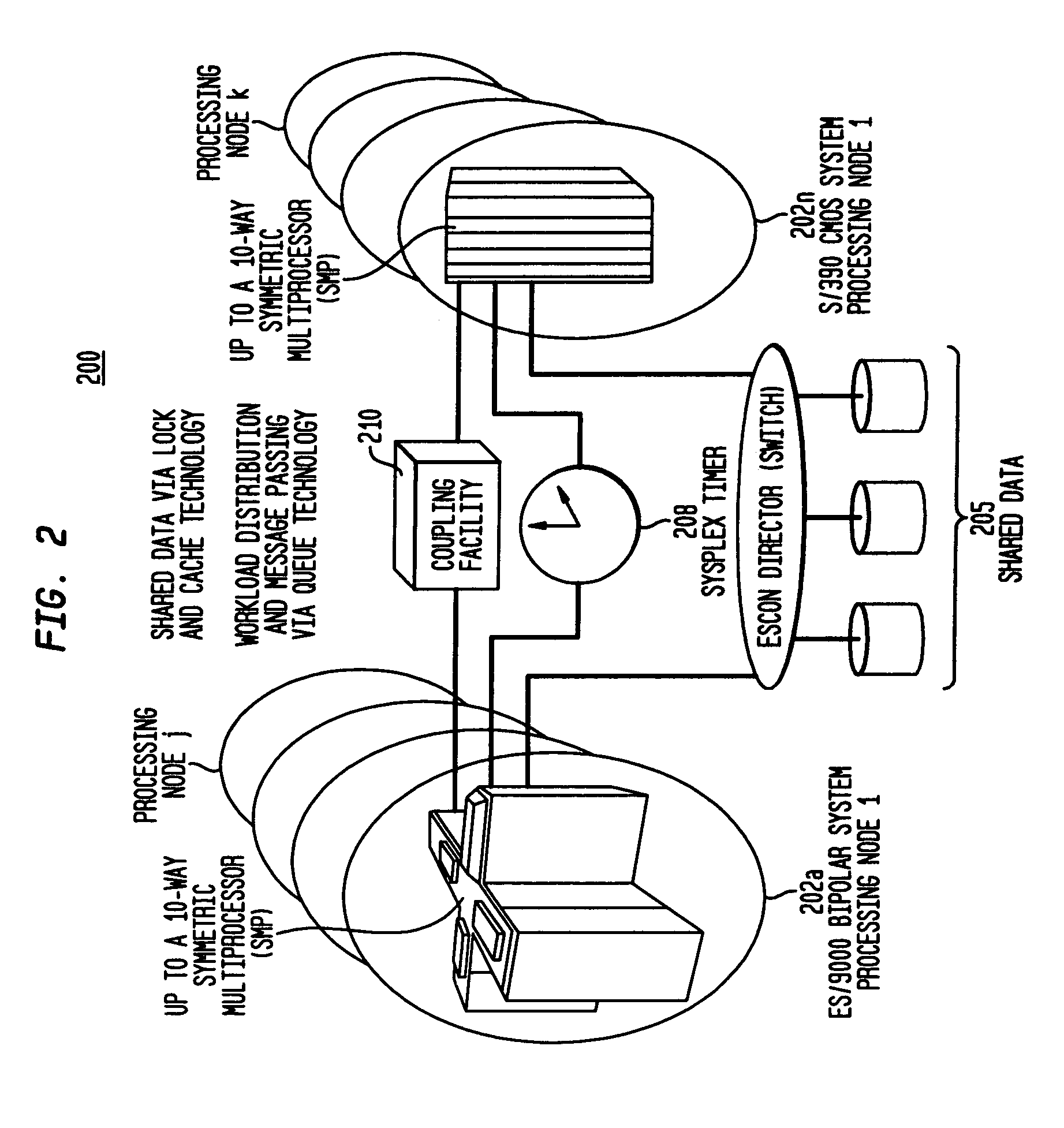System and method for processing multiple work flow requests from multiple users in a queuing system
- Summary
- Abstract
- Description
- Claims
- Application Information
AI Technical Summary
Benefits of technology
Problems solved by technology
Method used
Image
Examples
Embodiment Construction
[0024]The present invention is directed to a novel approach to using keyed technology to generate “Keys” such that a new work request may be placed correctly and directly into the “keyed” structure with at most two reads and one write. This is a huge advantage over the use of a linked list which may require the entire length of the queue to be traversed.
[0025]The key-based queuing system of the present invention may be implemented in a Coupling Facility, which is a component provided in the IBM S / 390 Parallel Sysplex comprising, for example, a cluster of interconnected processing nodes with attachments to shared storage devices, network controllers, and core cluster technology components, consisting of coupling facilities, coupling support facilities, and sysplex timers, and which includes a queue structure for providing FIFO and other priority based queuing. The queue however, is implemented on a key sequenced list structure such as will be described in greater detail with respect ...
PUM
 Login to View More
Login to View More Abstract
Description
Claims
Application Information
 Login to View More
Login to View More - R&D
- Intellectual Property
- Life Sciences
- Materials
- Tech Scout
- Unparalleled Data Quality
- Higher Quality Content
- 60% Fewer Hallucinations
Browse by: Latest US Patents, China's latest patents, Technical Efficacy Thesaurus, Application Domain, Technology Topic, Popular Technical Reports.
© 2025 PatSnap. All rights reserved.Legal|Privacy policy|Modern Slavery Act Transparency Statement|Sitemap|About US| Contact US: help@patsnap.com



